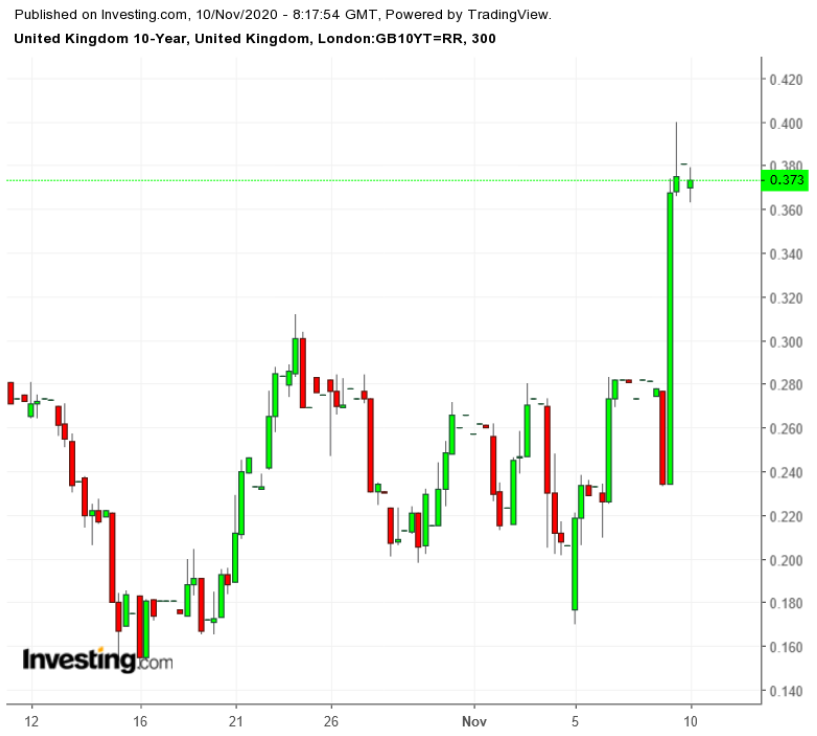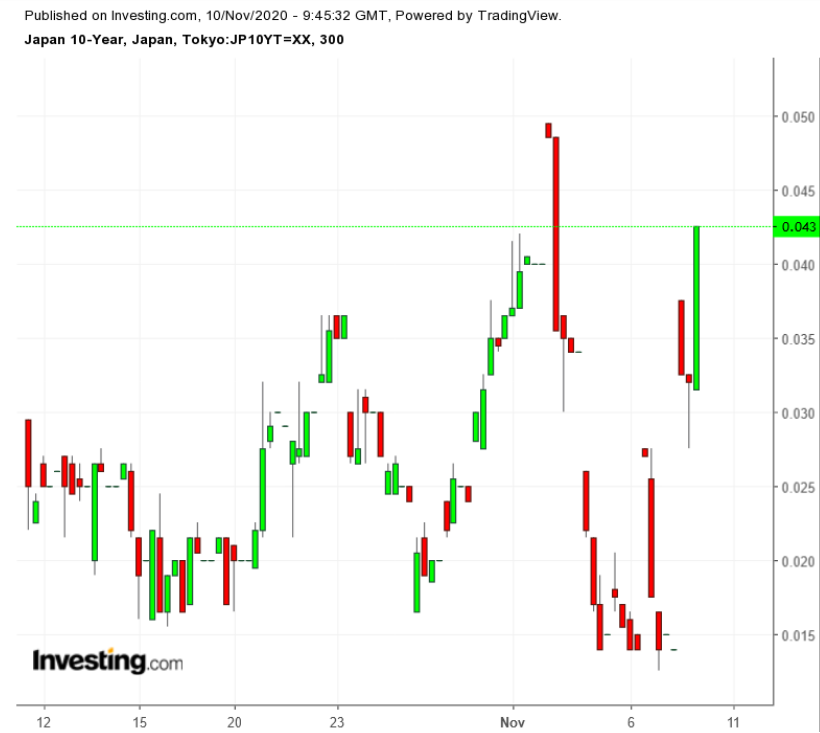Central banks around the world are pulling out most—but not all—of the stops to help their local economies soften the impact of the COVID-19 pandemic.
The Bank of England said last week it will increase its purchases of government bonds by £150 billion, £50 billion more than investors had been expecting. This will bring the Bank’s total bond purchases to £895 billion, including £20 billion in corporate bonds.

However, the statement from the central bank’s Monetary Policy Committee was markedly tepid regarding negative interest rates.
Noting that the market-implied path for the Bank Rate was hardly changed from August, showing a slight dip below zero, the MPC commented:
“This suggests that market participants attach some weight to the possibility of a negative rate.”
Investors took this to mean that the central bank, and notably chief economist Andy Haldane, don’t share those expectations. However, the Bank has asked institutions to comment on whether they can handle a negative Bank Rate, suggesting it wants to keep the option open. MPC members have been underwhelmed about how helpful the negative rates are where they have been tried.
RBA Cut Rates But BoJ Had No Room To Maneuver
The Reserve Bank of Australia demonstrated somewhat more urgency at the beginning of the week, cutting its official cash interest rate to 0.10% after saying it would not go below 0.25% when the rate was cut to that level in March.
The central bank also announced its first bona fide effort at quantitative easing, saying it will purchase A$100 billion in Australian government bonds and bonds of the states and territories over the next six months on an 80-20 split with maturities of five- to 10-years.
Previously, the RBA had limited its purchases to three-year bonds, targeting the 0.25% rate. The new bond purchases are delimited instead by quantity, to serve the same purpose as they do in many other major economies in providing monetary accommodation.
The combination, RBA governor Philip Lowe said, “will lower the whole structure of interest rates in Australia.” That, in turn, will support the economy through lower borrowing costs, a lower exchange rate, and higher asset prices.

The Bank of Japan has virtually no room for maneuver, and held its overnight interest rate at -0.1% while maintaining its purchases of 10-year bonds to keep the yield at about zero. The central bank has been losing its battle to lift inflation, and the pandemic’s impact on demand will lead to a 0.7% decline in prices this year, according to the BOJ forecast.
Japan is also seeing an increase in infections. “The economic outlook remains highly uncertain and there are big downside risks,” BOJ Governor Haruhiko Kuroda said after the bank’s policy meeting.
ECB Stands Pat...For Now
The European Central Bank also took no action at its late October policy meeting, hinting that it would be increasing its asset purchases in December and perhaps act on interest rates and bank lending once policymakers “recalibrate” and affirm the bad news that the euro area economy is hurting.
The US Federal Reserve, for its part, was in the awkward position of meeting between the presidential and congressional election on November 3 and the tabulation of results, which were delayed due to the high volume of mail-in votes because of COVID.
The prospect of a Senate remaining under control of the Republicans would mean the massive stimulus envisaged by the Democrats would be much smaller, putting more pressure on the Fed to act in December to adjust its asset-purchase program.
The US, too, is facing a resurgence of COVID infections, but is unlikely to have a national lockdown under the country’s divergent jurisdictions, especially as optimism grows that an effective vaccine is on the way.
